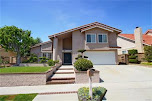SMALL HOMES CAN OFFER BIG RETURNS
When shopping for a new home, bigger is better, right? When it comes to roomier closets and more spacious kitchens, probably — but not so much when considering the return on your investment. According to a NerdWallet analysis of three years of data from Realtor.com for 20 of the largest U.S. metro areas, smaller homes generally appreciate at a faster rate than larger abodes.
NerdWallet looked at Realtor.com’s data for home listing prices in each of the 20 largest metro areas by population (other than New York City and Philadelphia, which had insufficient data) from 2013 to 2016. Homes for each metro area were lumped into four equal groups, or quartiles, based on square footage, each relative to the median home size in that area. From there, we calculated the compound annual growth rate of listing prices.
Key takeaways• Smaller homes see prices rise faster: While individual market dynamics and trends vary, in 17 of the 20 metro areas analyzed, listing prices of the smallest 25% of homes grew fastest when calculated as a percentage. The median annual growth rate for the smallest quartile of homes was 8.9% from 2013 to 2016. The second-smallest group of homes had the second-fastest growth rate, with median annual growth of 7.4%.
• Prices in Florida appreciated fastest: The two metro areas with the fastest rate of price appreciation among the smallest homes are both in Florida. Miami-Fort Lauderdale-West Palm Beach saw the most drastic growth, as the smallest quartile of homes appreciated by 19.5% each year from 2013 to 2016. The metro area with the second-fastest appreciation of small homes was Tampa-St. Petersburg-Clearwater, Florida, where the smallest quartile of homes appreciated by 16.6% annually.
• Larger homes appreciate fastest by dollar amount: While the smallest homes appreciate fastest when viewed as a percentage, larger homes appreciate faster when looking at absolute dollar amount. This is simply because of the larger price tag of the home. For example, the smallest homes in the metro areas we analyzed appreciated just over $57,535 on average between 2013 and 2016. Over the same period, the largest homes saw their prices rise $99,790 on average.
Why small homes might net better returns faster
These findings are not surprising, says Richard K. Green, a professor and chair of the Lusk Center for Real Estate at the University of Southern California. “We’ve had this now for about nine to 10 years, this return to center cities” being more desirable than suburbs, Green says. And homes in the center of big cities tend to be smaller than those in suburbs, Green noted, regardless of whether they’re historic houses or new construction.
In addition to increased demand for homes in city centers, another possible reason for the trend, Green says, is that new construction has been down nationwide dating back to 2007; that means inventory in general is low. Furthermore, many people who bought starter homes between 2004 and 2006 haven’t recovered all the value they lost during the housing crisis.
“They haven’t built up the equity that normally people would use for a down payment in order to move up, so you have a lot of people who are stuck in their starter homes,” Green says. While home prices are going up, he says, they’re not high enough to get people to leave their starter homes except in a few markets, such as Denver and Dallas. As a result, there often aren’t enough starter homes on the market to meet demand. This lack of inventory, paired with increased demand, means more price appreciation for smaller homes.






































0 comments:
Post a Comment